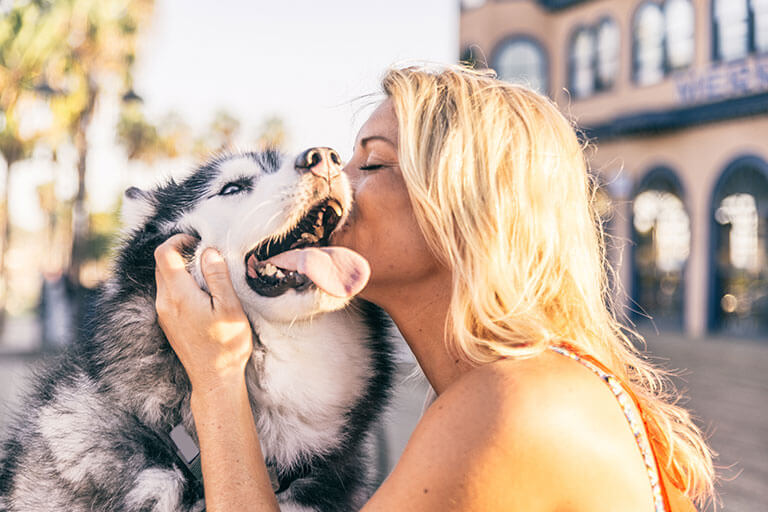Hyperactive Pets: Why Does It Happen?


Written and verified by the biologist Samuel Sanchez
During the pandemic confinement, we got used to spending much more time with our pets. This was a very beneficial thing for the guardian-animal bond, as it probably helped you strengthen your relationship with them and enrich your life in the process. Despite all the benefits that this may bring, we may detect strange behavior, such as hyperactive pets and we don’t know how to react.
Hyperactivity, stereotypical movements, and overexcitement can be emotions that occur in our pets and that we didn’t know about before.
It’s clear that the change of dynamics imposed by the recent lockdown affected us all. But, beyond people, the animals in our home also had their lives disrupted. They spent much more time in company and had more stimuli.
In this article, we’ll show you some strange behavior related to your pet’s emotions (especially in dogs, but applied to mammals in general). If you’re curious about the subject, read on!
Too much energy to be at home

Attention deficit hyperactivity disorder in humans (ADHD) is a neuropsychiatric developmental disorder detected in childhood. It’s characterized by inattention, motor restlessness, and impulsive behaviors. Other mammals can also suffer from it, but in dogs it’s often wrongly diagnosed.
Studies have shown that dogs of smaller weight (and therefore smaller size) are more prone to show nervous and impulsive behavior. This includes behavior such as chasing their tails, chasing flies, being aggressive when unattended, and showing hostility towards strangers. The reasons for this bias aren’t entirely clear, but genetic selection in the breeds may play a role.
One thing is clear: an active mammal isn’t necessarily hyperactive. Let’s take an example:
- A hyperactive dog is one that cannot focus its attention in any way. They react disproportionately to changes in the environment, are destructive to their surroundings, and require constant attention.
- If your dog is usually nervous, but is able to focus on a game or activity, it’s likely that they don’t have a hyperactivity disorder. We must read our companion’s emotions: if they’re able to focus on something they like, no matter how nervous they are, they probably aren’t suffering from any pathology. Like humans, controlling emotions is a matter of learning.
There is certain behavior in mammals that can be attributed to hyperactive behavior, but they’re due to inattention and a lack of stimulation. We’ll explain them below.
Repetitive movements reveal that something is wrong
Stereotypies are ritualized movements or postures without a specific purpose. They’re simple activities such as body swaying, self-caresses, or movements without a specific purpose, among others. A clear example of this in dogs is continual tail flicking. Why do they do this?
- The main reason for stereotypies is the inability of the animal to receive the natural stimuli for its species. This may be due to sudden changes in the environment, inattention, and, above all, a lack of mental and physical stimulation.
- Excessive licking, biting, incessant insect hunting, mindless wandering, or self-directed aggression are the most common stereotypies in pets.
Unless we’re dealing with a serious disorder, this type of behavior can be stopped. We need to take care of our pets mentally and physically. We shouldn’t only pet them; we should offer them mental games, physical challenges, even indoors, and challenges and stimulation. Even so, if we suspect it could be hyperactivity, then it’s best to see a specialist before self-diagnosing our pet and preparing a play plan.
Hyperactive pets
Typical behaviors of hyperactivity, stereotypical movements and stress aren’t only human emotions. Stress is also easily observed in mammals, as their facial musculature allows them to show their emotions clearly. Lowered ears, diarrhea, excessive panting, and continuous salivation are signs of stress. Stress can come from different sources: incessant sounds, continuous noises, sudden changes in the environment, or extreme nervousness in the owner.
In this article, we’ve shown you different emotions related to hyperactive pets. It’s important to identify them, understand the sources of conflict, and try to put an end to them before this behavior becomes routine.

The key is to always offer new dynamics to our pets. Previously unfamiliar games and challenges will be wonderful solutions, but also respecting their individuality and leaving them alone when they need to be quiet.
All cited sources were thoroughly reviewed by our team to ensure their quality, reliability, currency, and validity. The bibliography of this article was considered reliable and of academic or scientific accuracy.
- https://es.wikipedia.org/wiki/Trastorno_por_d%C3%A9ficit_de_atenci%C3%B3n_con_hiperactividad
- https://www.ncbi.nlm.nih.gov/pmc/articles/PMC3864788/
This text is provided for informational purposes only and does not replace consultation with a professional. If in doubt, consult your specialist.